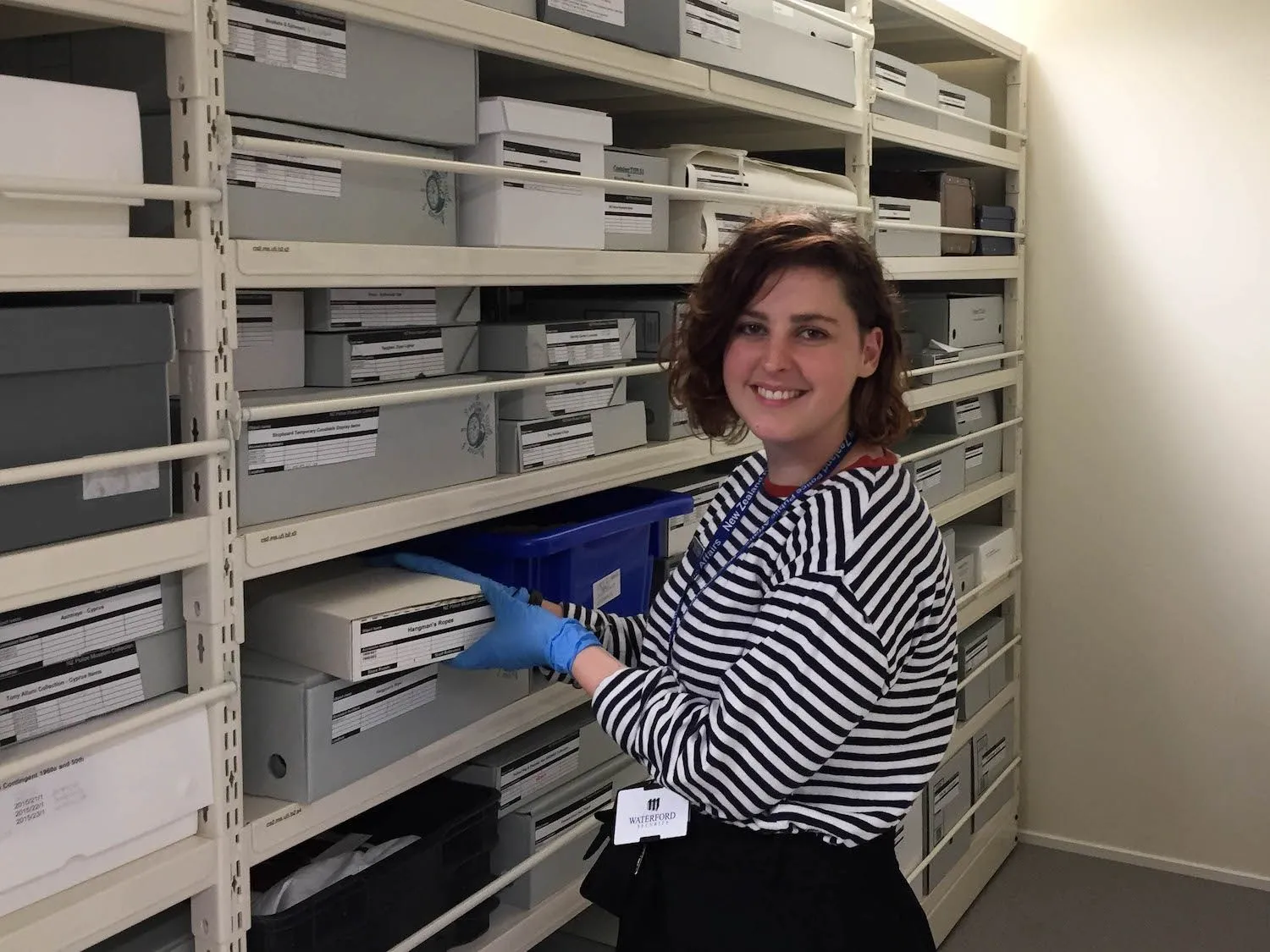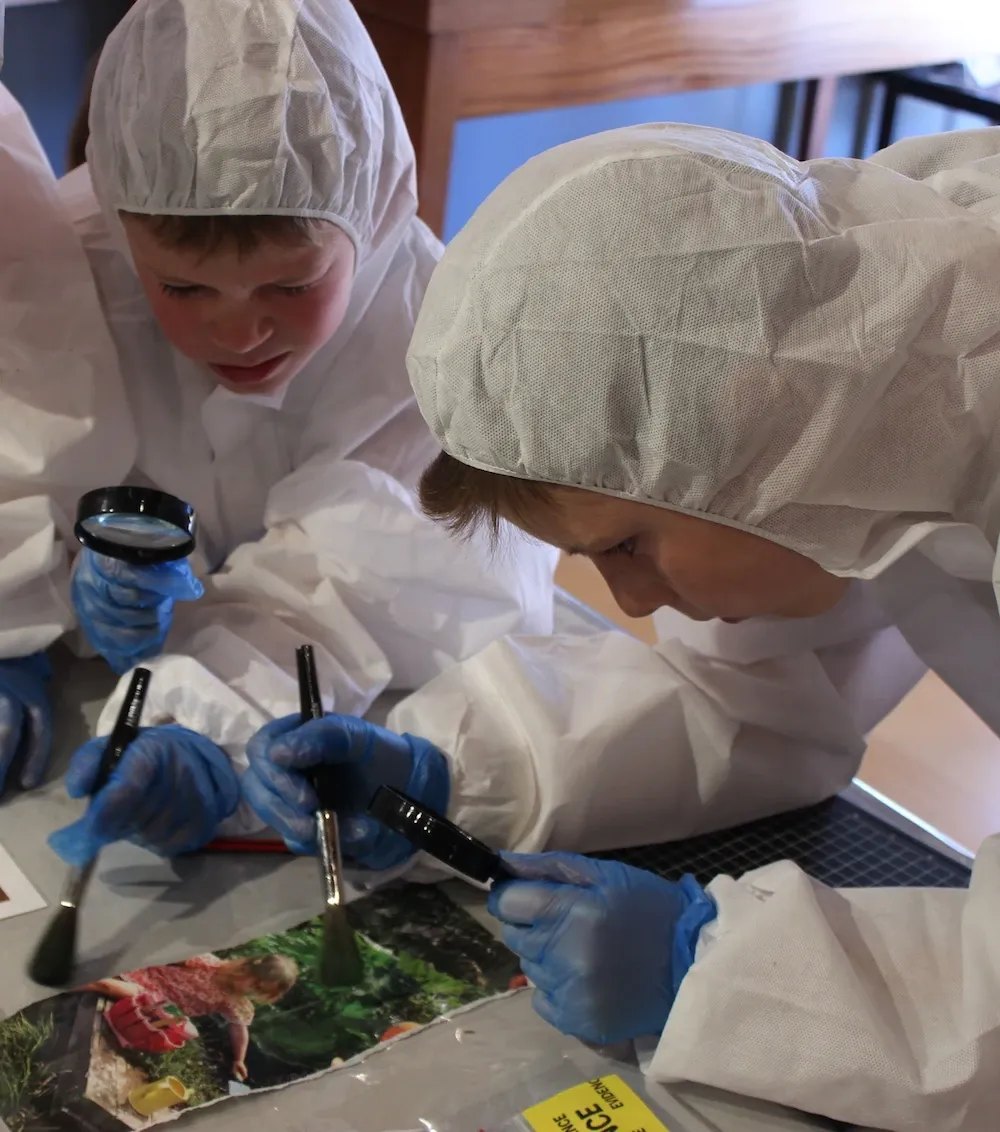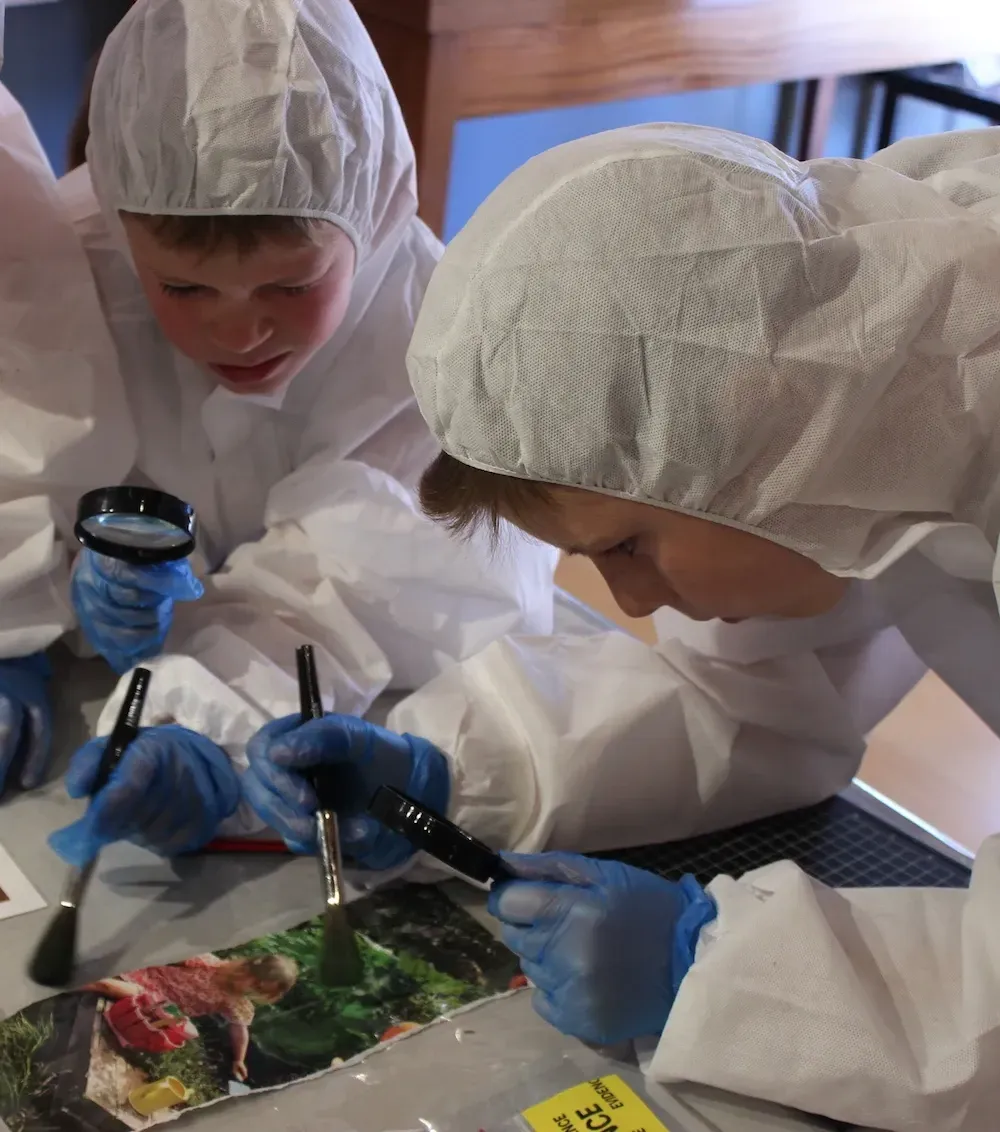Who Got the Gig? Jessica Aitken is working with infamous murderers
Written by

Nestled within the campus of the Royal New Zealand Police College in Porirua is a building that houses a captivating array of artefacts — from evidence in infamous murder investigations to historical police tools and weapons. The New Zealand Police Museum gives a voice to the personal stories behind some of the most turbulent eras in our nation’s history, such as the 1981 Springbok Tour and the Rainbow Warrior bombing. In June this year, for the first time in over a decade, The Police Museum was on the hunt for a new Curator of Collections. Jessica Aitken, film buff and museum enthusiast, got the gig and was keen to share her experiences from her first month in the role.
Mystery safes and knuckle dusters
Jessica’s main responsibility is to care for the museum’s collection and to assist in the creation of new exhibitions. Every day in the gig is different, she says: “I work a lot with the collection, I process new acquisitions — researching, cataloguing and rehousing each one, I deal with research inquires — people often ask about family members in the police or those who may have been criminals. I also assist with the research and writing for any major exhibitions we have.”
There is never a dull day working with new museum acquisitions. Each object Jessica comes into contact with has a story to tell, be it about the person who owned it or what it was used for. Recently she was lucky enough to open a 100-year-old safe within the collection whose contents were a mystery. “It’s a safe where all the keyholes are hidden, so we were just randomly turning dials to start with, and managed to somehow pop the lock open... We found a whole heap of interesting objects... One was a set of female knuckle dusters confiscated from a prostitute in Auckland. You never know what you are going to find.”
"It’s a safe where all the keyholes are hidden (...) you never know what you are going to find.”
All objects can tell a story
Discovering the stories behind various objects is Jessica’s favourite part of the gig and she says she loves being able to reconnect people with their taonga through the artefacts in the collection. “We had a family come in on Police Remembrance Day to drop off their father's police medals… it turned out that we held his father’s medals as well and that his daughter was also in the police. It was really lovely to meet them and learn about their story. That was a nice personal interaction and revealed how important police history is to members of the police and their families.”

The museum’s location means it’s situated within a hive of activity most days with new police recruits training and learning the ropes. Jessica says, “It's really important for recruits to see the history that precedes them and have it with them while they go out into the world after they graduate. There’s a really strong connection with the wider police community here, and I think there’s also a lot of interest from the general public as well.”
“It's really important for recruits to see the history that precedes them and have it with them while they go out into the world."
The importance of practical experience
Being detail-oriented and methodical are important skills for anyone wanting to pursue a similar gig, says Jessica. Her path to curator of collections hasn’t always been straightforward but it’s something that she has always wanted to do. She completed an undergraduate degree in Architectural Studies and Art History but says this wasn’t enough to get her to where she wanted to be. “Once I went out into the real world I realised that while I had all the theoretical skills I needed, I could write an essay and research efficiently, I didn't have any of the practical skills required to work with collections.” She decided to go back to study at Victoria University of Wellington and found the Master of Museum and Heritage Practice to be invaluable. “The programme was a really good way of getting practical experience in preparation for working with a collection — it was really hands on.”
Revealing 19th Century policing
He Matapihi o nehe rā: A window into the past is a new exhibition that opened recently at The Police Museum and Jessica says it displays some of the oldest objects in the collection. “It’s even housed within an old police station on site — a tiny one room police station from Hastings that was built in the 1890s. Inside there are lots of objects from 19th Century policing in New Zealand: there’s old helmets, whistles, decorative ceremonial batons, and lots of buttons...”
The New Zealand Police Museum is open 10am to 5pm seven days a week and is free to the public.
Image credits, from top:
Jessica Aitken with the museum collection. Photo supplied by The Police Museum.
A school group during a hands-on workshop with the Curator of Public Programmes. Photo supplied by The Police Museum.
Who Got the Gig? Did you advertise your new gig - or score it - through The Big Idea? Tell us about it!
For 15 years The Big Idea has helped creatives find work and opportunities in New Zealand and arts organisations and creative companies find the right people.
If you've recently appointed someone to a position you can share your announcement in our Community Announcements section straight away, or to be profiled in this series on Who Got The Gig in the creative sector, contact emanuella.deruiter@thebigidea.co.nz.
If you have a new job or position to fill please list it in our Work section, or contact us on advertising@thebigidea.co.nz for more information.
